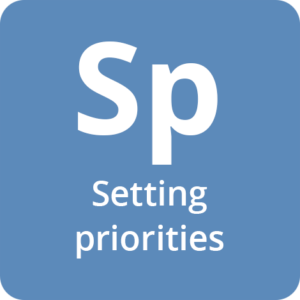 Decision-making and prioritization are central to the process to determine the uses of a local wellness fund. There are multiple stakeholders associated with the uses of a local wellness fund. This is true regardless of the sources or structure of the local wellness fund because, minimally the wellness fund is an investment made by a stakeholder, that is managed by a stakeholder, and disbursed to at least one stakeholder. It is not likely that all three of the aforementioned stakeholders are one entity.
Decision-making and prioritization are central to the process to determine the uses of a local wellness fund. There are multiple stakeholders associated with the uses of a local wellness fund. This is true regardless of the sources or structure of the local wellness fund because, minimally the wellness fund is an investment made by a stakeholder, that is managed by a stakeholder, and disbursed to at least one stakeholder. It is not likely that all three of the aforementioned stakeholders are one entity.
Equally vital to the effectiveness of a local wellness fund is the consideration of equity in the decision-making and prioritization processes. Without considering equity, funds risk exacerbating existing inequities.

Decision-making and prioritization are central to the process to determine the uses of a local wellness fund. There are multiple stakeholders associated with the uses of a local wellness fund. This is true regardless of the sources or structure of the local wellness fund because, minimally the wellness fund is an investment made by a stakeholder, that is managed by a stakeholder, and disbursed to at least one stakeholder. It is not likely that all three of the aforementioned stakeholders are one entity.
Equally vital to the effectiveness of a local wellness fund is the consideration of equity in the decision-making and prioritization processes. Without considering equity, funds risk exacerbating existing inequities.
Disbursing funds
Once a local wellness fund is established, funds must be disbursed to accomplish the stated purpose. Local wellness funds require a process to disburse funds. This process will be influenced by:
- Structure (level of transparency and decision-making processes) and
- Sources (funder’s restrictions and regulation of funds)
The process may be inclusive of or be visible to the community, funders, and beneficiaries or it may be less transparent, with decisions happening in meetings with a select group.
The majority of local wellness funds require fund seekers to request the funds they need. Often there are eligibility and selection criteria based in the determined uses (i.e., needs or targets); with many funds opting for an application and selection process similar to grantmaking. Some funds choose participatory budgeting techniques, which engages stakeholders in selecting funding priorities or programs and projects directly. Still others make the fund available to requestors with loosely defined purposes.
Guide to Prioritization Techniques
This tool from the National Association of County & City Health Officials describes five prioritization methods: multi-voting, strategy grids, nominal group technique, the Hanlon method, and the prioritization matrix. Each subsection includes step-by-step instructions on implementation followed by examples illustrating practical applications that local wellness funds can utilize in order to guide decision-making and consensus.
Participatory Budgeting Tools
The Participatory Budgeting Project creates and supports participatory budgeting processes that deepen democracy, build stronger communities, and make public budgets more equitable and effective.
Community Fund for Wellness – The Scattergood Foundation
This resource highlights Scattergood Foundation’s Community Fund for Wellness and their approach in dispersing resources. It provides an overview of its participatory grantmaking approach that alters the traditional process of philanthropic giving by empowering service providers and community-based organizations to define the strategy around a specific issue area or population. Local wellness funds can utilize this resource to learn from a community fund that has had success with a participatory grantmaking approach to determine if that model may work for them and what it looks like in action.
OnePierce Community Resiliency Fund Request
This resource from Elevate Health, a local wellness fund, is an initial form for funding applications. This form provides an example of the items asked for an initial funding inquiry that local wellness funds can borrow and learn from. Elevate Health currently uses this form to begin conversations with organizations seeking funding from its OnePierce Fund.


